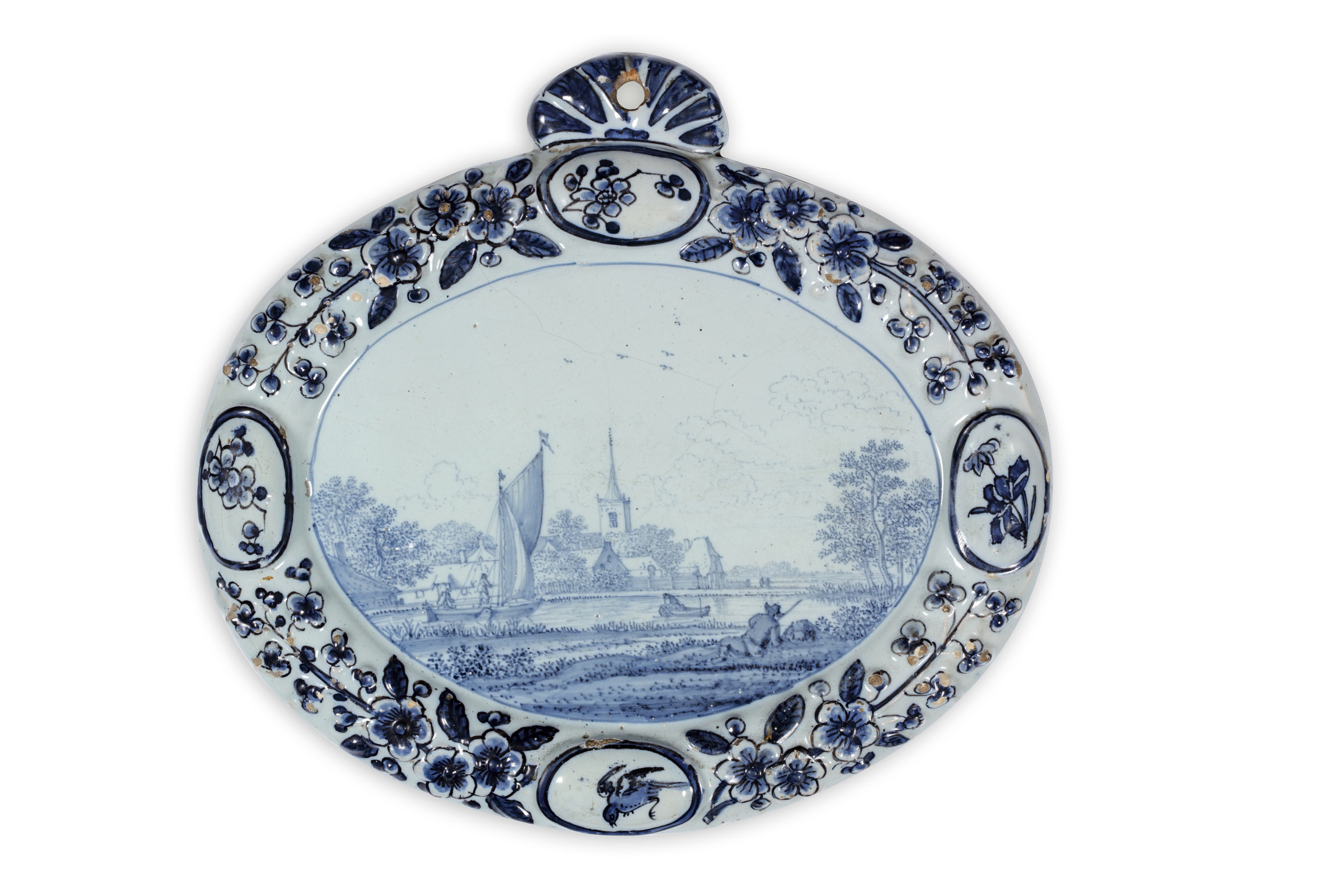![]()
Images on this website are licensed under a
Creative Commons Attribution-NoDerivs 3.0 Unported License.
OBJECT
D2404. Blue and White Plaque
Delft, circa 1680
Attributed to Frederik van Frytom (circa 1632-1702)
The center painted with a landscape in an atmospheric style, at the waterside a seated fisherman leaning towards his fishing rod, the water is navigated by a sailing boat and a rowing boat, one manned by two, the other by a single figure, in the background, flanked on the left by groups of trees, the contours of a village with a church tower, the oval frame decorated in relief with four berry branches alternated by three medallions with flowering branches and one with a bird in flight, the top affixed with palmette-shaped pediment pierced with a hole for suspension.
DIMENSIONS
Width: 24.8 cm (9.8 in.)
NOTE
Emboldened to create more complete works of art, Delft potters began to produce plaques with self- framing borders in the late seventeenth century. The tops of the plaques were pierced with two holes for hanging. Some examples were equipped with a more elaborate pediment for suspension. Further innovations appear in the shape of the plaques.
Whereas the early flat, rectangular plaques were made of slabs of clay, by the eighteenth-century, plaques with shaped borders in relief, representing the baroque and rococo stylistic idiom, began to be made in plaster moulds. The shapes became more stylish, more varied and creative. Plaques were adapted with dials for calendars, games and sermon schedules; they were also used for inscriptions or pictorial commemorations; and some were even shaped and painted as bird cages. With their lively forms and colourful decoration, the popularity of these moulded plaques grew in the second half of the eighteenth century, gathering momentum as the great tradition of Dutch painting receded.
Finally, it should be noted that the name ‘plaques’ for this kind of wall decoration is not a contemporary description. In the framed plaques mentioned above, the terms ‘porceleynen schilderij’ (porcelain painting), ‘aarde schilderij’ (earthen painting) and ‘porceleyne stucjes’ (porcelain pieces) are used. In 1691 the inventory of De Metaale Pot (The Metal Pot) factory mentions ‘landscap scilderijtjes’ (landscape paintings) of various sizes. In an inventory of Het Jonge Moriaanshooft (The Young Moor’s Head) from 1692, 3 ‘steene schilderijen’ (three stone paintings) are mentioned. Therefore it can be concluded that these terms were in popular use at the end of the seventeenth century.









